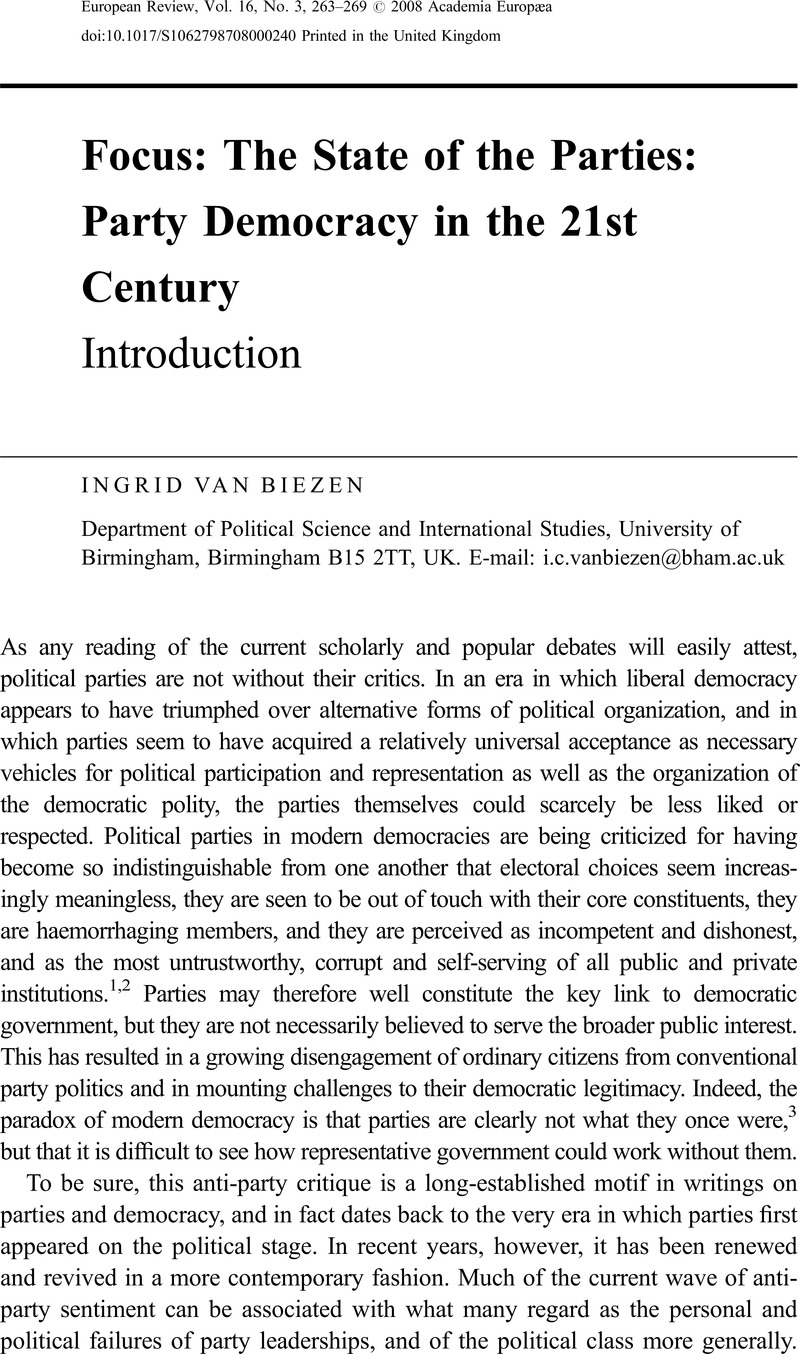Crossref Citations
This article has been cited by the following publications. This list is generated based on data provided by Crossref.
Enyedi, Zsolt
2014.
The discreet charm of political parties.
Party Politics,
Vol. 20,
Issue. 2,
p.
194.
Piccio, Daniela R.
2014.
A Self-interested Legislator? Party Regulation in Italy.
South European Society and Politics,
Vol. 19,
Issue. 1,
p.
135.
Kuno, Tomoko
Suzuki, Shunji
Urushibata, Kimiko
Kobayashi, Kurima
and
Sugimoto, Satoshi
2019.
Coercivity of Pulverized ThMn<sub>12</sub> Compounds with a Limited Amount of α-(Fe,Co) Phase.
MATERIALS TRANSACTIONS,
Vol. 60,
Issue. 8,
p.
1697.
Dommett, Katharine
and
Temple, Luke
2020.
The Expert Cure? Exploring the Restorative Potential of Expertise for Public Satisfaction With Parties.
Political Studies,
Vol. 68,
Issue. 2,
p.
332.
KÖLLN, ANN‐KRISTIN
and
PEDERSEN, HELENE HELBOE
2024.
Virtuous party linkages: Developing a data‐based analytical model to explain voters’ attitudes towards political parties.
European Journal of Political Research,



